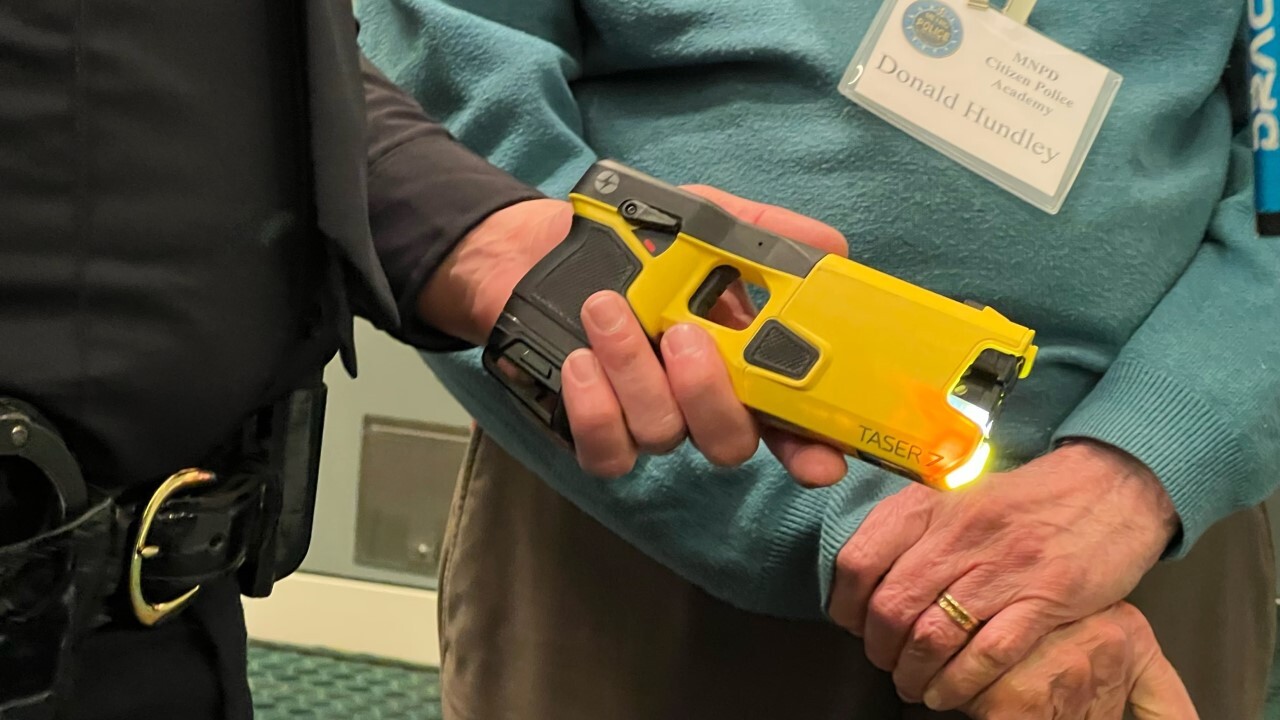NASHVILLE, Tenn. (WTVF) — The Metro Nashville Police Department showcased the latest in Taser technology after ordering more than 1,400 devices to equip all officers by June.
You probably know them by name, but the "Taser 7" is unlike most have ever seen before.
Axon representative Charlie Balon began the demonstration by stating that his company’s goal was to make the bullet obsolete in the next 10 years. He later claimed the Taser 7 is the first of many steps in that direction.
Sergeant Jason Spencer and Balon both say the most drastic difference from what officers carry now is the efficiency of this latest model.
The current X26P model has an effective range between 7 to 15 feet, while the Taser 7 is effective between less than 4 feet and up to 22 feet.
Spencer says most interactions with officers take place within 5 feet, which makes the older model already ineffective. Spencer says at that range officers were forced to step back before deploying their Tasers, which sometimes is not an option.
The Taser 7 closes the gap but also gives officers the freedom to deploy from much further away. Its yellow color is also meant to make it virtually impossible for officers to confuse the device with their firearm.
“I think we’re going to see a much higher success rate in not having to elevate our uses of force,” Spencer said.
Part of the reason is that these new Tasers come with two cartridges prepared to deploy one after another. This gives officers a second attempt at immobilizing a suspect, without having to reload a cartridge.
Once a cartridge is deployed and makes contact, officers can back up with the prongs still attached to the suspect and send an additional shock at a distance.
Last March, Officer Josh Baker was hurt in a shootout that began after he tried using his Taser. He had one shot, but the Taser was ineffective at such close range. Officer Baker resorted to firing back at Nika Holbert who later died as she fled the scene.
In 2020, Metro Nashville had three police shootings with one fatality. Ten police shootings left six people dead in 2021, although one person died from a bullet that was not fired by a Metro officer.
Community Oversight Board Executive Director Jill Fitcheard says she was impressed by the demonstration and hopes these new alternatives ultimately save lives.
“We want any type of tactics that will help reduce violence against people,” Fitcheard said.
Fitcheard and the Community Oversight Board are some of the first to respond after any type of officer-involved shooting. She says what she’s noticed most is the need for more de-escalation training.
“There’s no reason to rush through some of these instances when people are suffering a mental health crisis. What they need is someone who can talk to them in a way that will help de-escalate. We know that when you have weapons pointed at people, that’s not a sign of de-escalation no matter how you’re talking,” Fitcheard said.
Chief John Drake says de-escalation is a priority and reminds officers to remember why they invest in non-lethal alternatives.
"No one said it was going to be easy, but it's going to be worth it. So we look to be an excellent organization. We want to make sure that we're the most effective we can be as officers," Drake said.
Officers will get at least six hours of training, splitting time between live-action instructors and virtual reality learning. Spencer claims this is more training than they’ve ever offered on Tasers before.
Nashville will also be one of the first in the country to use VR training with real-world scenarios that go beyond shoot or don’t shoot.
Balon says part of the reason for more VR training has to do with how well officers retain what they’ve learned. He says the retention rate for VR learning is 75%, compared to lecture-style learning which is about 5%, and reading, which is at 10%.




